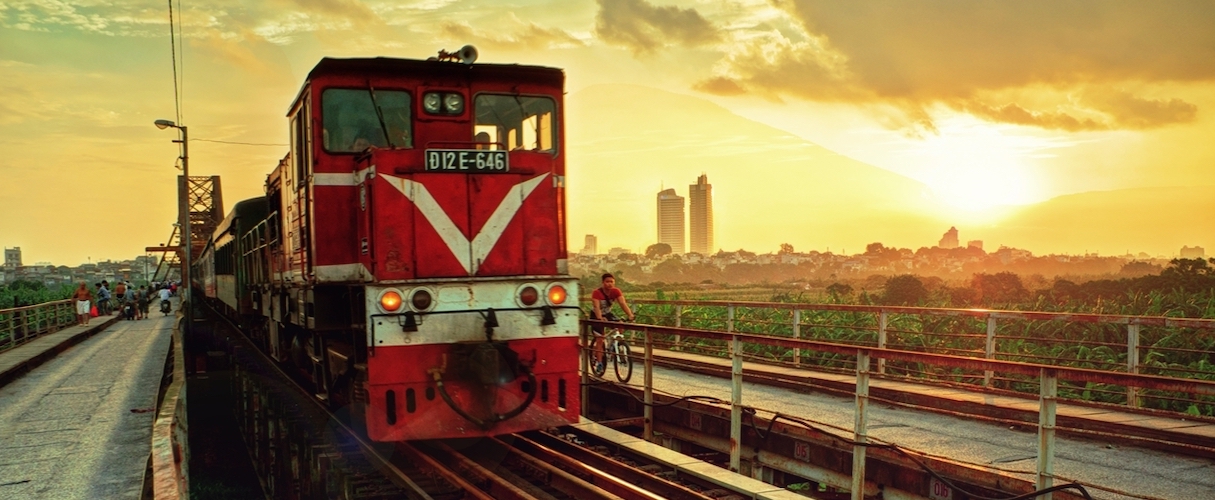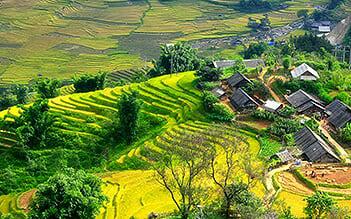Overview
For a long time, Hanoi people are familiar with an ancient Long Bien bridge by the Red River. Over a hundred years, it still welcomes a lot of people to pass by.
Introduction of Long Bien bridge
In Hanoi, many big bridges are crossing the Red River to connect the traffic on both sides of the river such as Chuong Duong, Thang Long, Thanh Tri bridges, etc. However, for many generations living and working in the land of the capital, the name of Long Bien is forever a symbol of the bridge across the Red River.
So, do you know why this rusty iron bridge has come to the heart of the people of Hanoi?
Let's go back more than 100 years ago when the Long Bien bridge was inaugurated to canalize the arterial road between the two banks of the Red River. The 2-kilometer-long Long Bien bridge was begun to come into operation after 3 years of construction (1898 - 1902).

The rustic beauty of the Long Bien bridge
There are roads and railways on the bridge, so the traffic on the bridge was hectic. The bridge was built by the French and named the Doumer bridge, the name of the governor of Indochina at the time (Paul Doumer).
How is the Long Bien bridge designed?
Long Bien bridge is the first iron bridge connecting the Red River built by the French. The bridge has a length of 2,290m across the river, of which 896m are divided into 19 spans of steel beams, supporting the entire weight of the bridge.
The bridge is designed into many lanes, including roads and railroads so that both trains and road vehicles can circulate. Railway lanes are designed in the middle of the bridge, and either side is the motorway and pedestrian lanes.

Admiring Long Bien bridge from a coffee shop
The unique feature of the bridge is that the traffic flow along the left direction, not on the right as the bridges we often see in Vietnam. This kind of road is widespread in European countries, especially France.
Long Bien bridge on Hanoi tours has the appearance of a winding dragon. From a distance, visitors can see the bridge, which is very similar to the Tolbiac bridge on the railway connecting the cities of Paris and Orléans, France.
Watching the Red River from Long Bien bridge
Although it no longer plays a vital role in the traffic of the capital, there are still many vehicles and people as well as tourists coming to the bridge to cross the river and watch the beautiful scenery on the Red River from the bridge.
Walking on Long Bien bridge, visitors can see rusty iron marks, misaligned pillars, or sagging bridge spans, etc. Looking down the river, visitors will easily catch the images of the floating boats, green mudflats planted with bananas, corn, and vegetables on the banks, etc.

The bridge is a familiar spot for travelers and the young
These simple image of Long Bien bridge always makes people fall in love, in stark contrast to the scene of bustling traffic on Chuong Duong bridge on the opposite side.




